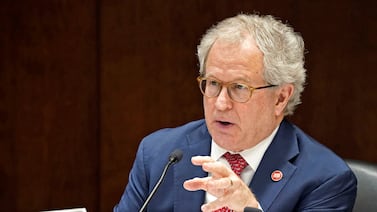Getting students to apply for the Free Application for Federal Student Aid was a problem for Colorado before the pandemic.
For those that work with students to get them to apply, the coronavirus pandemic has disconnected many counselors from students, making it difficult to get high schoolers to complete the form.
“Normally, our staff would support students to complete their FAFSA by working with them in person,” said Natasha Garfield, Denver Scholarship Foundation scholarship director. “Doing that remotely is somewhat more challenging just because, even with screen shares, it’s still a little bit more cumbersome and a slower process.”
Colorado is near the bottom in FAFSA completion numbers.
And numbers are expected to dip this year due to the pandemic. From January to the end of March, the state saw about 5,000 less FAFSA applications over the same time period as last year, according to U.S. Department of Education numbers.
Among Colorado high school seniors, the overall number of completed FAFSA applications is down about 1,000, or 3.2% over last year, according to the National College Attainment Network. And the number of FAFSA renewals is down 4%, according to the group,
High school seniors, especially, are a target area for the state, where there is usually ready access to counselors and resources about the FAFSA process.
Garfield said Denver Public Schools, which is served by the scholarship foundation, only saw a slight dip in its FAFSA completion numbers — a 2% dip, from 65% to 63%.
Part of the reason, she said, is the focused effort the foundation has in keeping in touch with students despite the pandemic forcing the cancellation of in-person schooling.
“One example is that we have a few young men who maybe are not always super responsive to their advisor, but the advisors know that their girlfriends, who can get them to respond,” Garfield said.
But even with the resources that the foundation has, she said it’s still been difficult to keep constant contact with students to get them to fill out the FAFSA form.
The state is seeing some dips in some rural districts, according to federal numbers.
The decrease in applications and completions in those areas, Garfield said, might be attributed to the time counselors have to reach out to students, who help drive students toward the federal aid.
Garfield said she’s heard it’s taken double the amount of time for counselors to help students with the FAFSA form when working remote.





